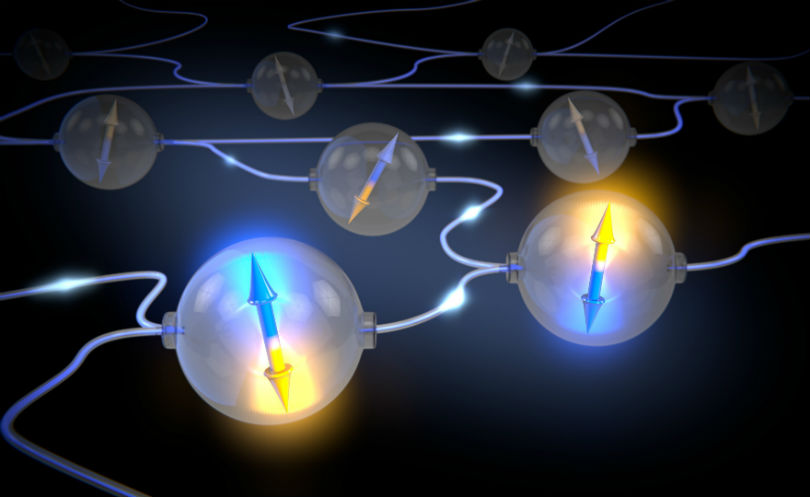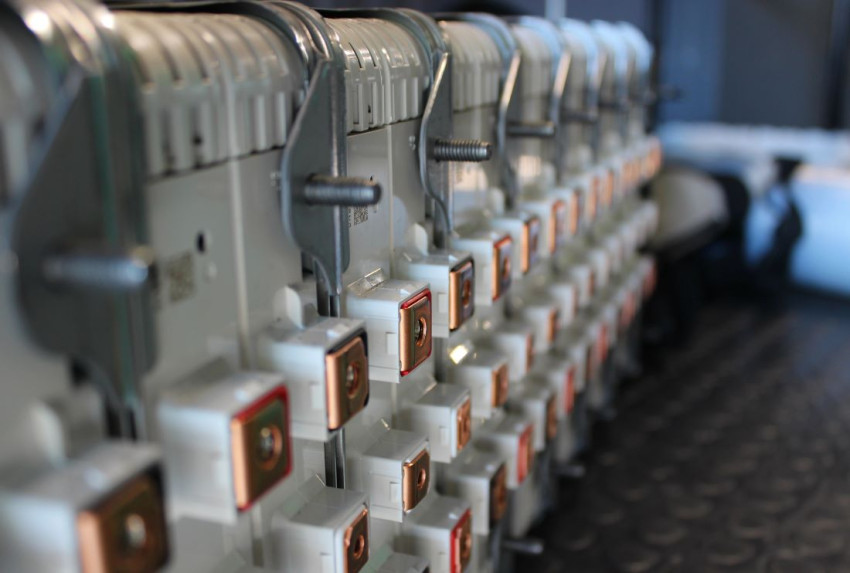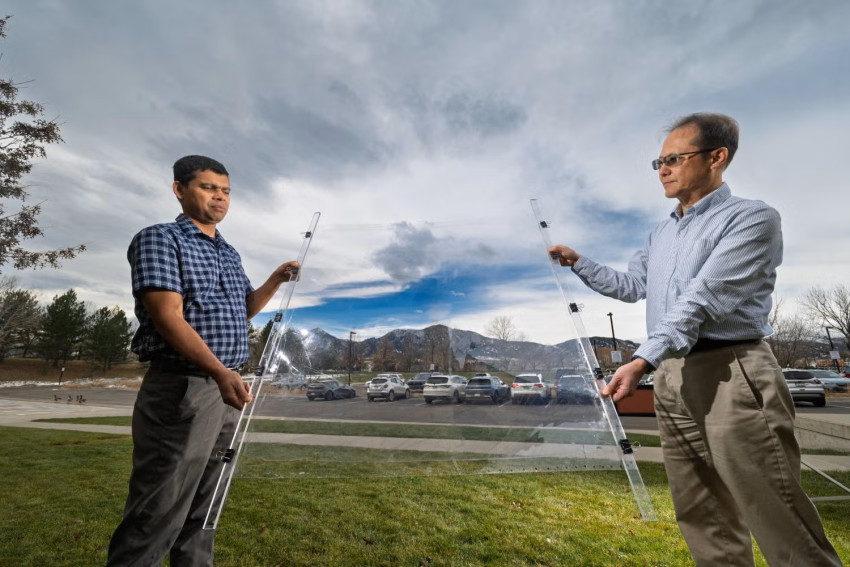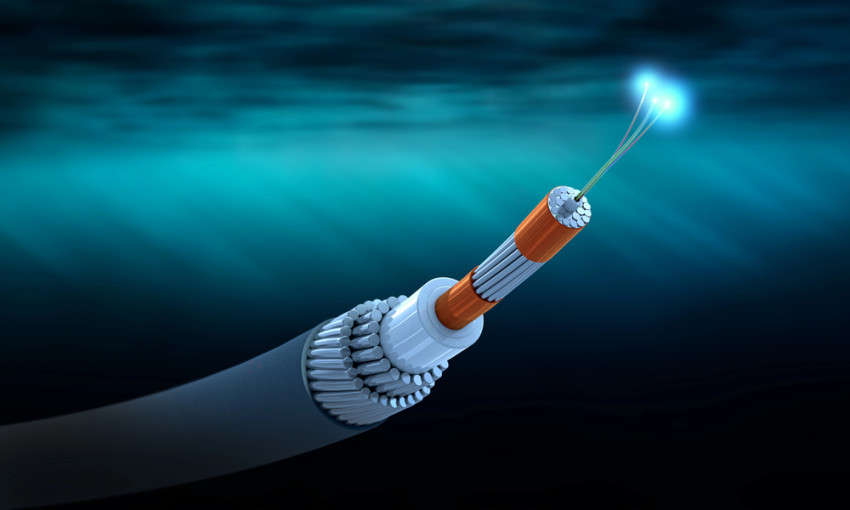
Quantum internet one step closer
Engineers at Delft University of Technology have taken an important step towards long-distance communication via a quantum link that cannot be tapped.
It’s the dream of anyone who attaches real importance to privacy: the quantum internet. In other words: a network that cannot be tapped unnoticed thanks to the use of principles from quantum mechanics. A team headed by Ronald Hanson (QuTech, a cooperation between Delft University of Technology and TNO) now claims in Nature to have succeeded in setting up the quantum mechanical link between two nodes in such a network faster than it is lost again.
Entangled nodes
A central aspect of quantum communications is the phenomenon of entanglement: a quantum mechanical link between two particles whose existence was irrefutably proven by Hanson in 2015. By entangling two quantum bits or qubits – the bits with which a quantum computer computes – with one another, the status of one qubit can be transferred to the other. Information can thus be transmitted – with the great benefit that a third party cannot eavesdrop on such communication without the transmitter and receiver being aware of the fact.
The only problem is that this principle does not work over longer distances. While you can strengthen information transmitted in the old-fashioned way, if necessary, that is not possible with quantum information. It is therefore necessary to cut a long quantum connection into shorter sections linked by nodes. Each of these nodes must then be entangled with its two neighbours in order to be able to pass on information from transmitter to receiver.
Hanson and his team have now succeeded in generating a link between two neighbouring nodes faster than it is lost again. Furthermore, the nodes are able to maintain the entangled state long enough to allow the information to be passed on to the next node in the network.
Contaminated diamond
The QuTech scientists employ a type of qubit that uses a ‘contaminated diamond’, a diamond with a nitrogen atom inside it next to an empty space, a hole in the crystal structure. This combination is called a nitrogen-vacancy centre or NV centre. (A new research group focussing on these NV centres was recently set up at Delft University of Technology; see ‘Delft group measures magnetic fields using a diamond’.)
Such a qubit in the form of an NV centre has a spin, a quantum mechanical property than can have two values: high or low. The spins of two qubits are entangled with one another via a detour: the two qubits are linked via a glass fibre to a third component which has a detector that is so sensitive that it can detect a single photon.
The qubit with the high spin, for example, then transmits a photon to this component while the other qubit does not. The detector, however, sees only that a photon is arriving, but it doesn’t know which of the two qubits was responsible for it. The spins of the two qubits are thus entangled with one another: the one qubit has to have a high spin and the other a low spin, but which qubit has which spin is unclear. In this way, the qubits can be entangled with one another 39 times per second, a thousand times faster than was possible to date.
Filtering out noise
To maintain the entanglement for as long as possible, Hanson and his colleagues are building on a method on which they reported in 2010. Here they protect the spin against ambient influences by a continuous flip-flop from high to low and vice versa using microwave pulses.
'By contrast with 2010, we can now precisely characterise the noise factors of the environment and bypass these by modifying the time between the microwave pulses,’ writes Hanson. 'We thus effectively filter the noise out of the environment. As a result, we have been able to stretch the time for which we can maintain the entanglement to around two-tenths of a second.'
World’s first quantum internet
The next step is to actually set up a small network with more than two qubits. At the moment it has only been proven that the entanglement between qubits can in principle be created fast enough and maintained long enough to be able to set up such a network. And that would then be a further step in QuTech’s ambition to link the cities of Amsterdam, Delft, Leiden and The Hague with one another in a quantum network in 2020, which should be the world’s first quantum internet.
If you found this article interesting, subscribe for free to our weekly newsletter!
Photo: Delft University of Technology/Scixel







